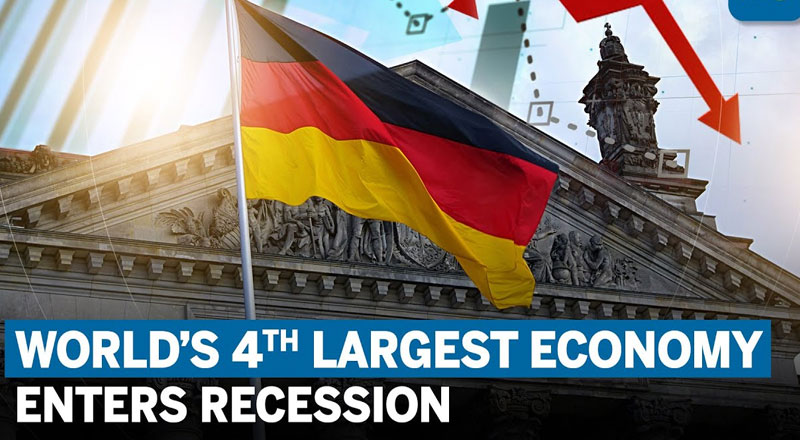- Germany, World’s Fourth Largest Economy, Enters Recession.
- Germany’s economy contracted slightly in the first quarter and thereby was in recession after negative growth in the fourth quarter of 2022.
- Escalating signs of economic malaise in Europe sent the euro to multi-month lows against the dollar. The latest sign of weakness out of Europe came from Germany, where the economy contracted.
- The U.S. dollar index, which measures the currency against six major peers and is heavily weighted towards the euro.
- The Chinese yuan renewed a six-month low, dropping to 7.0903 per dollar in the offshore market.
- Australia’s dollar has felt the impact of China’s economic weakness acutely due to its close trade ties, and the New Zealand dollar was still reeling from the central bank’s shock dovish tilt.
Germany, the world’s 4th largest economy, enters recession as GDP falls for 2nd quarter, inflation hurts spending. The data released by the Federal Statistical Office shows Germany’s gross domestic product, or GDP, declined by 0.3 percent in the period from January to March. This follows a drop of 0.5 percent in Europe’s biggest economy during the last quarter of 2022.
Two consecutive quarters of contraction is a common definition of recession, though economists on the euro area business cycle dating committee use a broader set of data, including employment figures. Germany is one of the 20 countries that use the euro currency.
Employment in the country rose in the first quarter and inflation has eased, but higher interest rates will keep weighing on spending and investment, said an expert. “Germany has experienced a technical recession and has been by far the worst performer among major eurozone economies over the past two quarters,” He said, predicting further weakness ahead.
The figures are a blow to the German government, which last month boldly doubled its growth forecast for this year after a feared winter energy crunch failed to materialize.
The euro slipped about 0.2%, enough to refresh a two-month low at $1.0715. Sterling eased 0.1%, after briefly hitting its weakest since April 3 at $1.2332.
The US currency has also been supported by a paring of bets for Federal Reserve rate cuts this year, with the economy proving resilient to the effects of the central bank’s aggressive tightening campaign until now.
The Chinese yuan renewed a six-month low, dropping to 7.0903 per dollar in the offshore market. The Asian giant has produced a cascade of disappointing economic indicators, all pointing to dull consumer demand and suggesting a post-pandemic recovery has already run its course.
Australia’s dollar has felt the impact of China’s economic weakness acutely due to its close trade ties, slipping to a 6 1/2-month low of $0.6523. The New Zealand dollar was still reeling from the central bank’s shock dovish tilt on Wednesday, which triggered a 2.2% slide. It slid a further 0.4% to hit its lowest since mid-November at $0.6077.
(With inputs from agencies)





